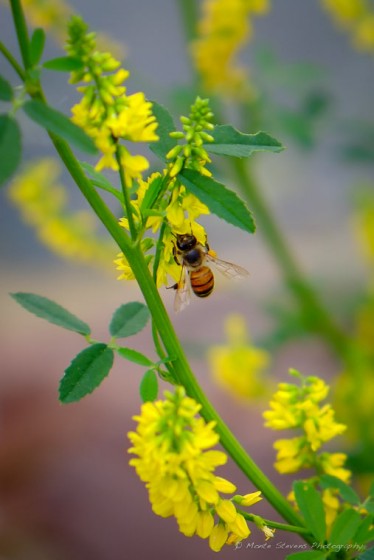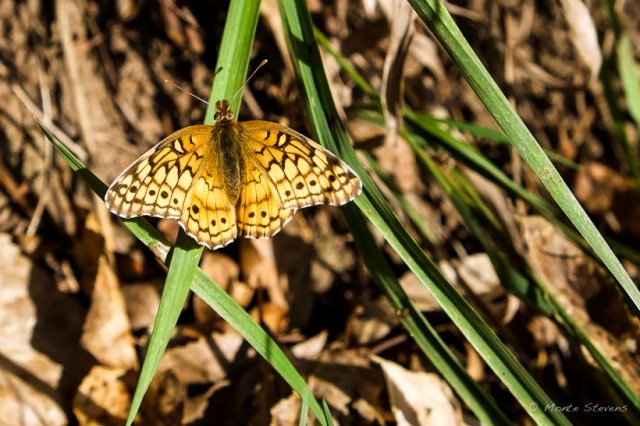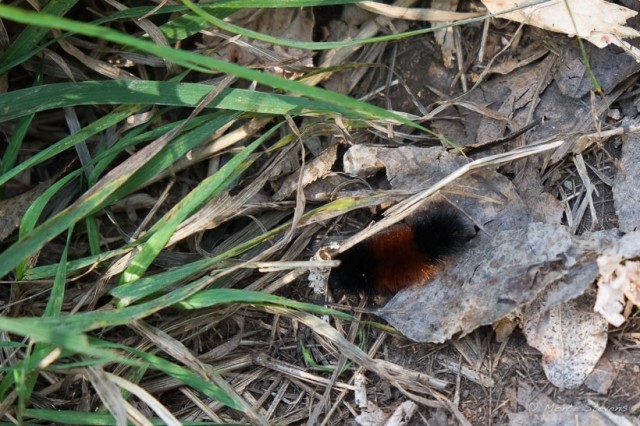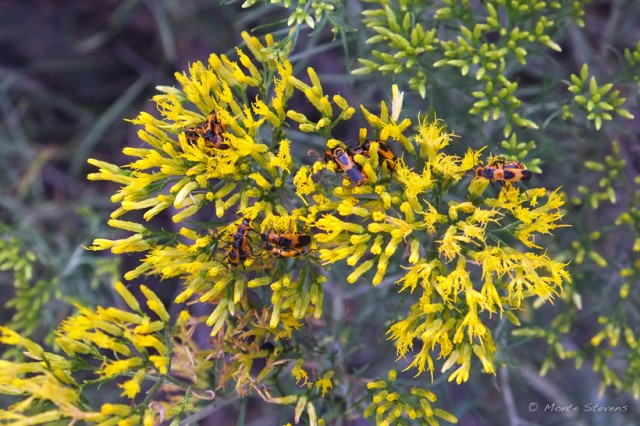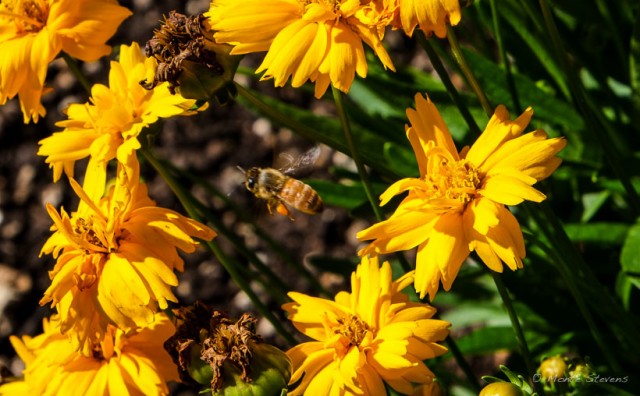“If you are out there shooting, things will happen for you. If you’re not out there, you’ll only hear about it.”
-
-
Busy Bee
I sat by my pond the other afternoon with soft diffused light due to cloud cover. A busy bee made his appearance moving from one flower to another collecting pollen. I watched with enjoyment and took a handful of photos but I mainly watched the constant movement. Look close and you’ll see the pollen on the legs.
-
Happy New Years
Here’s a self-portrait of the party animal. Lights were out by 10:23 and blankets were pulled up around my neck due to the sub-freezing temperatures. This is what happens when you’re facing your 65th birthday in 2015, carry an extra 15-20 pounds at the waistline and have a difficult time staying awake past 11:00. I stopped trying to stay up till midnight and welcome in the new year a few years ago. I figure I’ll see it in the morning feeling refreshed after a good nights sleep. In my past I did not need a holiday to party and drink, any day worked. I actually was more interested in the “four” bowl games on New Year’s Day. We’d set out unhealthy snacks and overdose on both all day long. When the kids were younger it was fun to make them a big breakfast and watch the Rose Bowl Parade. I hope everyone has a blessed 2015 and Happy New Years!
-
Too Much to Miss
The Variegated Fritillary are found in open sunny areas such as prairies, fields, pastures, road edges, landfills. They feed on the nectar from several plant species including butterfly weed, common milkweed, dogbane, peppermint, red clover, swamp milkweed, and tickseed sunflower. The Environmental Learning Center provides both those needs. I’m no longer one to go for a walk in the nature areas as I tend to meander through them. Way too much to miss if I just walk.
-
Wooly Bear Caterpillar
I always look where I’m stepping this time of the years as I see these beautiful caterpillars all over the trails at the Environmental Learning Center. My walk last week included a few photos of these caterpillars, a gopher snake, a couple of white tail deer and some large insect carrying a green worm that was bigger that it was. What a struggle it was having but such determination. If we spend the time we can learn so much from nature.
After my walk I decided to find out more about these Wooly Bears. So, what’s a Wooly Bear Caterpillar? Well, it’s also called an Isabella Tiger Moth and can be found in many cold regions, including the Arctic. The banded Woolly Bear larva emerges from the egg in the fall and overwinters in its caterpillar form, when it literally freezes solid. It survives being frozen by producing a cryoprotectant in its tissues. (Sounds painful) In the spring it thaws out and emerges to pupate. Once it emerges from its pupa as a moth it has only days to find a mate. In most temperate climates, caterpillars become moths within months of hatching, but in the Arctic the summer period for vegetative growth – and hence feeding – is so short that the Woolly Bear must feed for several summers, freezing again each winter before finally pupating. Some are known to live through as many as 14 winters.
There’s an annual Woolly Bear Festival held every Fall in downtown Vermilion, Ohio, on Lake Erie. The one-day, family event, which began in 1973, features a woolly bear costume contest in which children, even pets, are dressed up as various renditions of the woolly bear caterpillar. The festival is held every year around October 1 on a Sunday on which the Cleveland Browns have an away game. It is touted as the largest one-day festival in Ohio. Could be a good photo opportunity.

-
They All Showed Up
This bush seemed to be moving when I walked by it. Upon a closer look I discovered it was covered in milkweed bugs. There may have been a hundred scattered throughout the bush and just his bush. I looked closer and what do my eyes see? They are all mating. It’s an orgy! Disgusting! So, I watched for a while. Had to chuckle as I imagined one of them sending out a text message earlier. “Hey we’re all meeting at the sixth bush from the lookout on the Cathy Fromme trailhead at 6:00 pm. Be there or be square.” Looks like they all showed up. 🙂
-
Always on the move
Trying to shoot any insect that’s capable of flying is a challenge. They are always moving. They are not moving as fast our universe, so eloquently explained by Paul in his posting on the Milky way. However, they are elusive and ddarters, tough on auto focus systems. I noticed several bees hovering over these flowers and knelt down to watch and tRyan to get some shots. Even though the bee is blurry, I was pleased with this image. He’s airborne and most of those images are blurry. This one’s in focus enough for posting but not printing. Another reason I like this image is the large glob (technical term) of pollen on his leg that can be clearly seen during flight.

